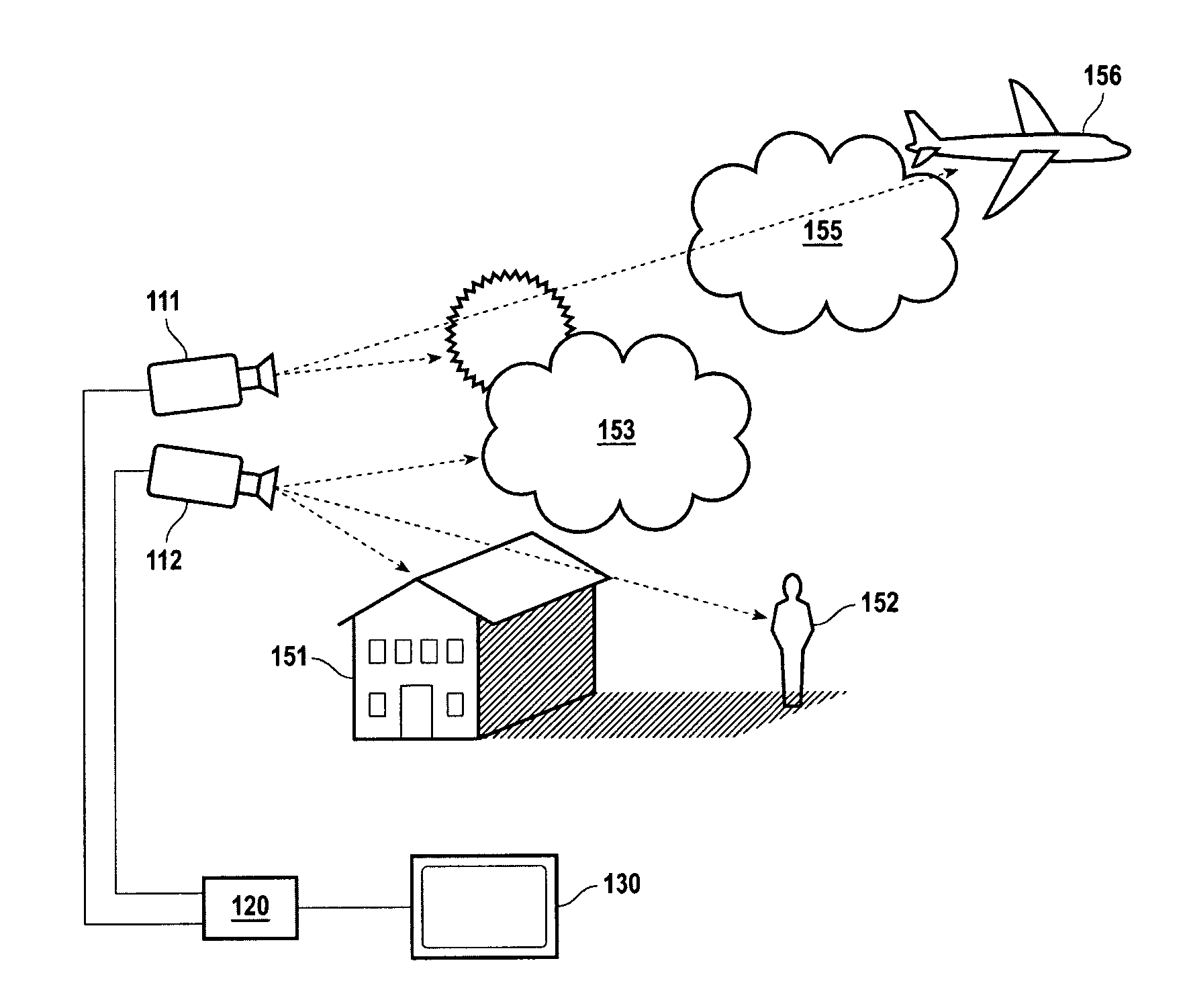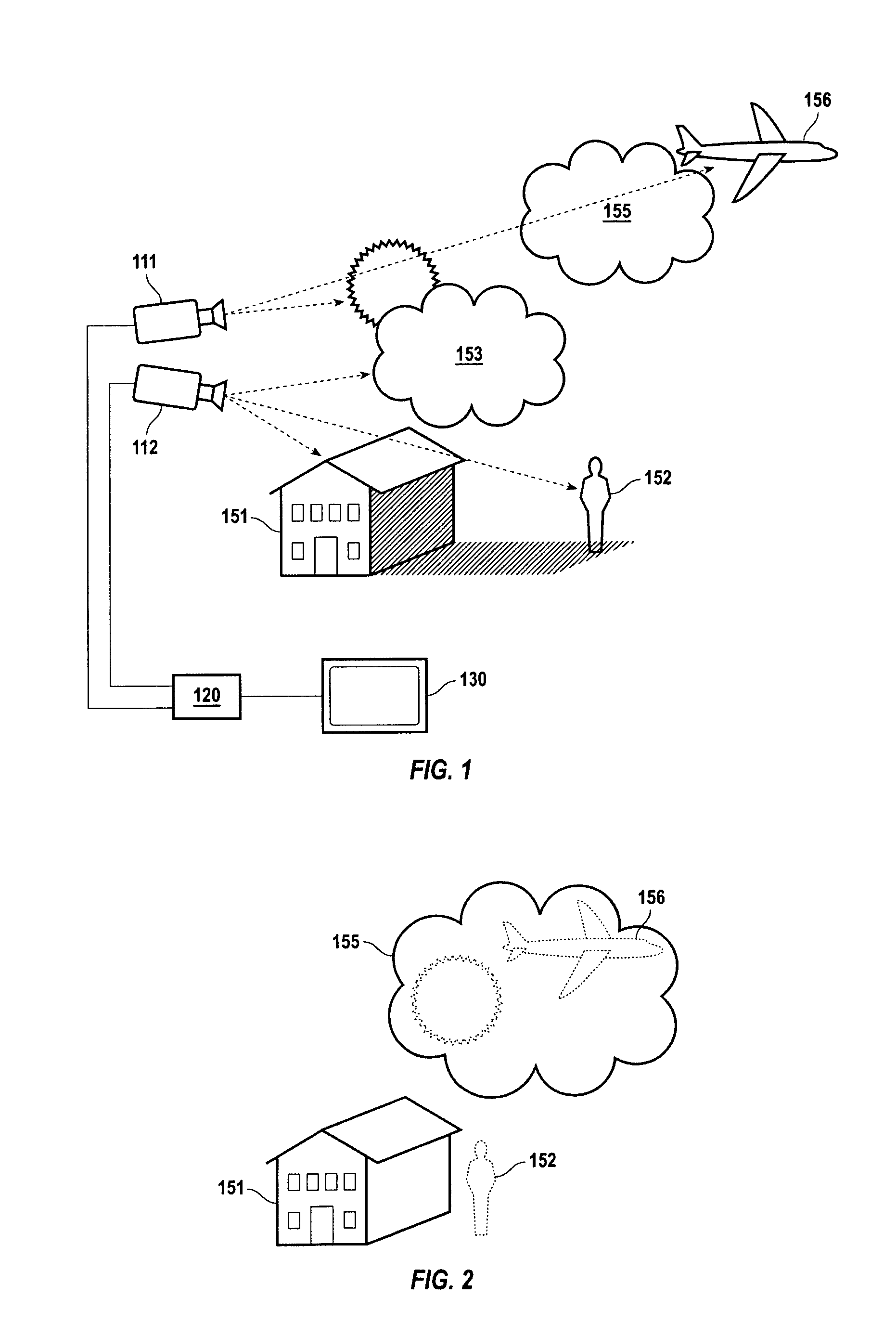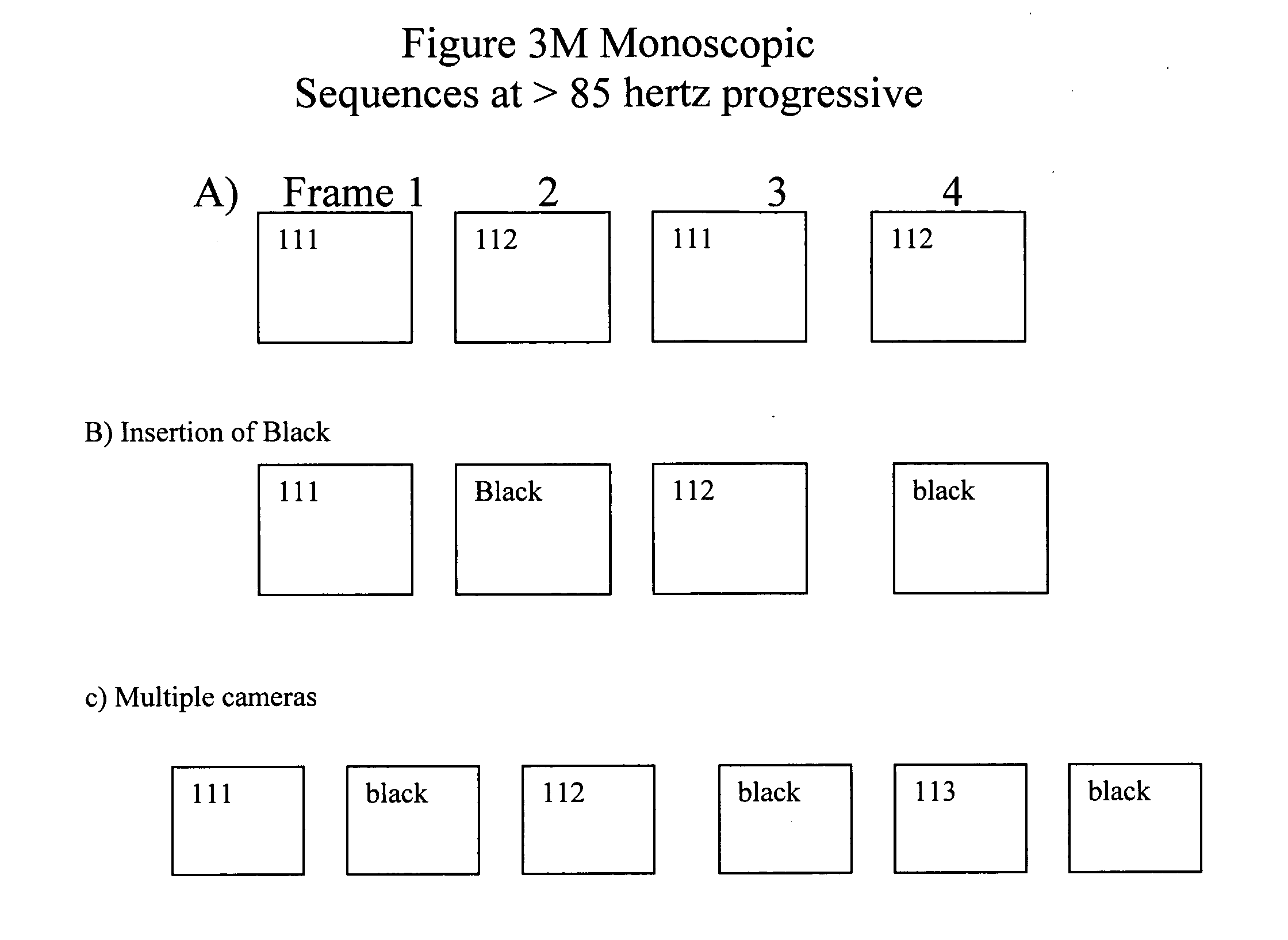Method of fusion or merging imagery data for improved visual perception using monoscopic and stereographic fusion and retinal decay techniques
a technology monographic and stereographic fusion, applied in the field of fusion or merging imagery data for improving visual perception using monoscopic and stereographic fusion and retinal decay techniques, can solve problems such as non-convergence of datasets
- Summary
- Abstract
- Description
- Claims
- Application Information
AI Technical Summary
Benefits of technology
Problems solved by technology
Method used
Image
Examples
Embodiment Construction
[0013] In accordance with the present invention FIG. 1 is a schematic illustration of an image acquisition and display system 100 according to the teachings of the instant invention. Image acquisition cameras 111 and 112 are directed at a common an area of interest, represented by the icon collection 150. At least one of image acquisition cameras can include a non-visual sensor for creating an electronic image that has the potential to reveal objects that would not be visually observed, for example a thermal or infrared imaging camera for detecting people or vehicles at night or obscured by fog, etc. The electronic signals corresponding to time sequential images or image frame are conveyed via circuits 115 and 116 to image display control unit 120. Image display control unit 120 comprises an amplifier (A) and an image processor (P). The processor combines and transmits the image frames from cameras 111 and 112 to display monitor 130 according to the methods taught herein. This inclu...
PUM
 Login to View More
Login to View More Abstract
Description
Claims
Application Information
 Login to View More
Login to View More - R&D
- Intellectual Property
- Life Sciences
- Materials
- Tech Scout
- Unparalleled Data Quality
- Higher Quality Content
- 60% Fewer Hallucinations
Browse by: Latest US Patents, China's latest patents, Technical Efficacy Thesaurus, Application Domain, Technology Topic, Popular Technical Reports.
© 2025 PatSnap. All rights reserved.Legal|Privacy policy|Modern Slavery Act Transparency Statement|Sitemap|About US| Contact US: help@patsnap.com



